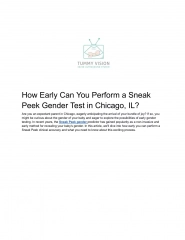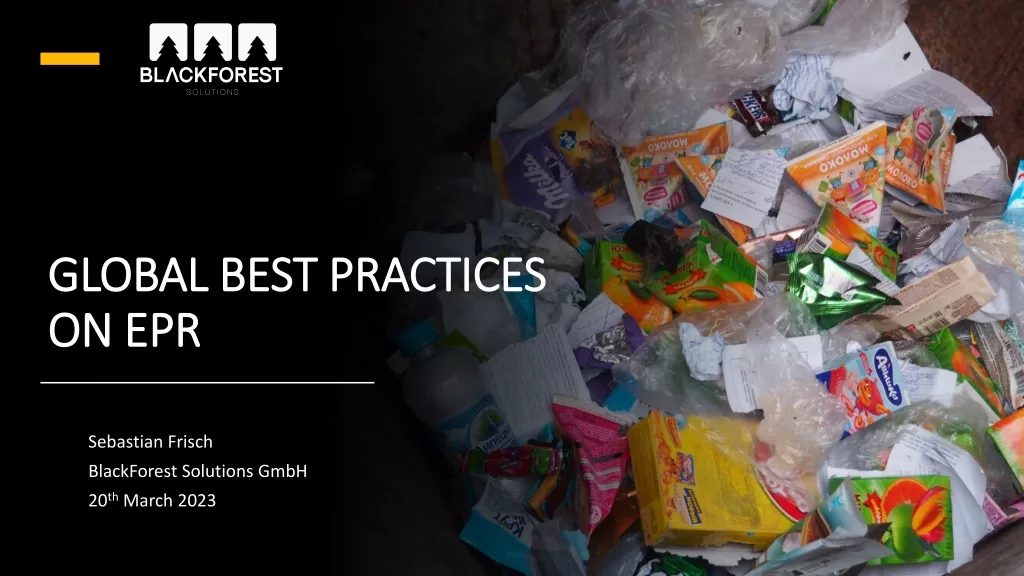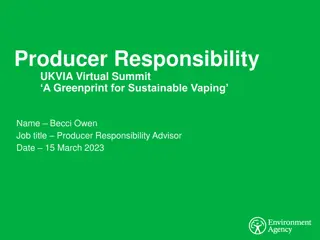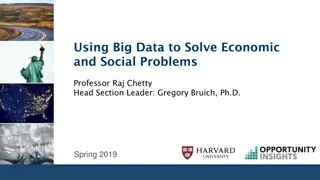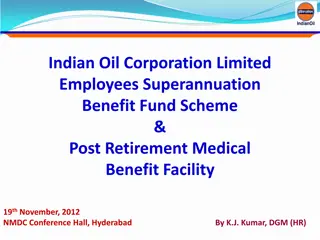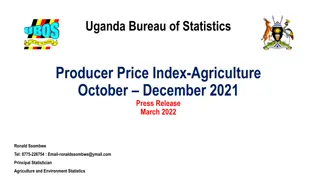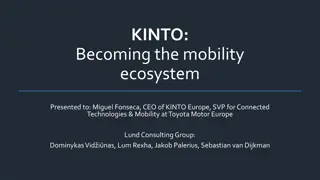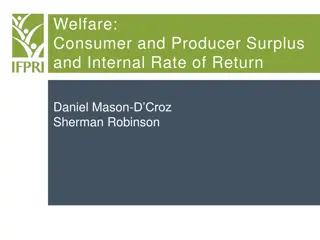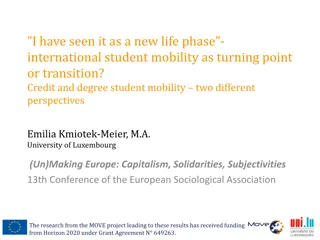PEEK: Proactive Producer Mobility Management Scheme for ICN
A detailed exploration of PEEK, a proactive producer mobility management scheme for Information-Centric Networking (ICN) proposed by Vignesh Sivaraman from the Department of Electrical and Computer Engineering. The scheme aims to address the increase in mobile traffic, leveraging distributed approaches while adhering to the principles of NDN (Named Data Networking). It discusses objectives, the producer mobility problem, and the proposed forwarding strategy entailing interest generation, forwarding, and data forwarding processes within the network.
Download Presentation

Please find below an Image/Link to download the presentation.
The content on the website is provided AS IS for your information and personal use only. It may not be sold, licensed, or shared on other websites without obtaining consent from the author.If you encounter any issues during the download, it is possible that the publisher has removed the file from their server.
You are allowed to download the files provided on this website for personal or commercial use, subject to the condition that they are used lawfully. All files are the property of their respective owners.
The content on the website is provided AS IS for your information and personal use only. It may not be sold, licensed, or shared on other websites without obtaining consent from the author.
E N D
Presentation Transcript
PEEK: A Proactive Producer Mobility Management Scheme for ICN Vignesh Sivaraman Department of Electrical and Computer Engineering
Motivation Increase in mobile traffic CISCO forecasts eightfold increase between 2015- 2020[1] Consumer mobility is supported in NDN Mobile producers Smartphones Vehicles Support for producer mobility [1] CISCO, White paper: Cisco VNI Forecast and Methodology, 2015-2020, Tech. Rep., July 2016.
Objectives Support for producer mobility A distributed approach Respecting the principles of NDN
Producer Mobility Problem R1 R2 Consumer R4 R3 AP3 AP4 AP2 AP1
Proposed forwarding strategy Exploits the following properties Spatial locality Interest and data traverse the same path Introduce Hopcount Threshold field in Interest header Interest Format Content Name Selectors Nonce Guiders Hopcount Hopcount Threshold
Proposed forwarding strategy Interest generation (at the consumer) Interest forwarding (at the router) Data forwarding (at the router)
Interest generation Initialize the threshold to a default value On timeout, decrease the threshold value On receiving the data, set threshold to the default value
Interest forwarding At the router (when no match in CS nor in PIT) Case 1: Hopcount less than threshold Forward interest to the best face using FIB Case 2: Hopcount greater than threshold Probe interest to all neighbors Case 3: Hopcount greater than TTL Drop interest
Data forwarding Forward the data using PIT Update the FIB for the data with incoming face R AP2 AP1
An Example (Threshold=2 and No timeout) R1 R2 Consumer R4 FIB Updated R3 AP3 AP4 AP2 AP1
An Example (Threshold=2 and timeout) Consumer R1 R2 FIB Update Threshold=1 Threshold=2 R4 Timeout R3 AP3 AP4 AP2 AP1
Determining the threshold Formulation of the optimization problem Decision variable: Hopcount threshold Objective: Minimize the cost incurred (in terms of packets generated) Constraint: Bound on consumer experienced delay Cost of flooding: Number of neighbors at a distance of k or less
Simulation Results Setup A tree network Leaves are the APs for the producer Randomly moving producer Simulating a human walk to a vehicle movement Probabilistic flooding to compare the performance[2] [2] Y.-T. Yu, R. B. Dilmaghani, S. Calo, M. Sanadidi, and M. Gerla, Interest propagation in named data manets in IEEE CNC 13, January 2013, pp. 1118 1122.
Simulation Results 36 Hopcount NAIF Average no. of packets per IntP 32 28 24 20 16 0 5 10 15 20 25 30 Speed of MP
Simulation Results 1.2 Hopcount NAIF 1 0.8 Delivery Ratio 0.6 0.4 0.2 0 0 5 10 15 20 25 30 Speed of MP
Simulation Results 3 Hopcount NAIF 2.8 2.6 2.4 Average delay 2.2 2 1.8 1.6 1.4 1.2 1 0 5 10 15 20 25 30 Speed of MP
Simulation Results 40 Hopcount NAIF 35 30 99th percentile delay 25 20 15 10 5 0 0 5 10 15 20 25 30 Speed of MP
Conclusion Addressed producer mobility problem Hopcount based forwarding Spatial locality Data traverses the same path as interest Router forwards the interest based on the hopcount
Mathematical expressions Decision variable: ? (hopcount threshold) Objective function: Minimize ? ? ??? ??? (? ?)?? ? ? = ??? ??, 0 ??= ? + ?1(1 +?2 ?1)? ? 1 Constraints ? ? ? ? ? ??(? ?)?? ?+ ?? ? ? 0 ? ? ????? ?
Mathematical expressions ??: Probability that the shortest path between producer and first flooding router is i. ??: Complimentary CDF of ?? ?1: Expected number of first hop neighbors ?2: Expected number of second hop neighbors ?: Time to live
Mathematical expressions Power law graphs 1?) 1?) ??? 1(? ?1= ???(? 1? ??? 1(? 1?) 1?) ??? 2? ?2= ???(? ?? 1? ?? ?? (?) ? ? ?,? =



